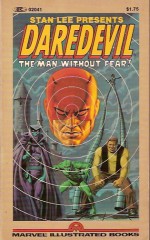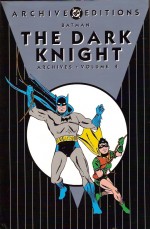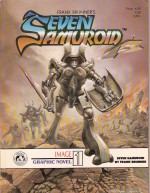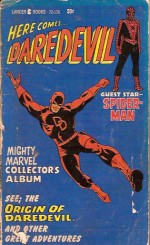

By George Herriman (Eclipse Books/Turtle island)
ISBNs: 0-913035-48-3 and 0-913035-75-0
I must admit to feeling like a fool and a fraud reviewing George Herriman’s winningly surreal masterpiece of eternal unrequited love. Although Krazy Kat is unquestionably a pinnacle of graphic innovation, a hugely influential body of work which shaped the early days of the comics industry and an undisputed treasure of world literature, some readers – from the strip’s earliest antecedents in 1913 right up to five minutes ago – just cannot “get itâ€.
All those with the right sequence of genes (K, T, Z and A, I suspect) are instantly fans within seconds of exposure whilst those sorry few who are oblivious to the strip’s inimitable charms are beyond anybody’s meagre capacity to help.
Still, since everyday there’s newcomers to the wonderful world of comics I’ll assume my inelegant missionary position once more and hope to catch and convert some fresh soul – or, as I like to think of it, save some more “lil Ainjilsâ€â€¦
The Krazy & Ignatz softcover series of collected Sunday pages was contrived by Eclipse Comics and the Turtle Island Foundation and taken over by Fantagraphics when the publisher succumbed to the predatory market conditions of the 1990s. It is not and never has been a strip for dull, slow or unimaginative people who simply won’t or can’t appreciate the complex multilayered verbal and pictorial whimsy, absurdist philosophy or seamless blending of sardonic slapstick with arcane joshing. It is the closest thing to pure poesy that narrative art has ever produced.
Think of it as Dylan Thomas and Edward Lear playing “I Spy†with James Joyce amongst beautifully harsh and barren cactus fields whilst Gabriel GarcÃa Márquez types up the shorthand notes and keeps score…
Herriman was already a successful cartoonist and journalist in 1913 when a cat and mouse who had been cropping up in the corners and backgrounds of his outrageous domestic comedy strip The Dingbat Family/The Family Upstairs finally graduated to their own feature. “Krazy Kat†debuted in William Randolph Hearst’s New York Evening Journal on October 28, 1913 and, mainly by dint of the publishing magnate’s overpowering direct influence, spread throughout his vast stable of papers.
Although Hearst and a host of the period’s artistic and literary intelligentsia (which included e.e. Cummings, Frank Capra, John Alden Carpenter, Gilbert Seldes, Willem de Kooning, H.L. Mencken and Jack Kerouac) utterly adored the strip, many local editors -ever cautious of the opinions of the hoi-polloi who actually bought the papers – did not and took every career-risking opportunity to drop it from the comics section.
Eventually the feature found a home in the Arts and Drama section of Hearst’s vast empire of papers. Protected by the publisher’s patronage the strip flourished unharmed by editorial interference and fashion and ran until Herriman’s death in April 1944.
The basic premise is simple: Krazy is an effeminate, dreamy, sensitive and romantic feline of indeterminate gender in love with Ignatz Mouse: rude crude, brutal, mendacious and thoroughly scurrilous.
Ignatz is a real Man’s Muridae; drinking, stealing, cheating, carousing, neglectful of his spouse and children. He revels in spurning Krazy’s genteel advances by regularly and repeatedly belting the cat with a well-aimed and mightily thrown brick (obtained singly or in bulk and generally legitimately from noted local brickmaker Kolin Kelly).
The third member of the classic eternal triangle is lawman Offissa Bull Pupp, hopelessly in love with Krazy, well aware of the Mouse’s true nature, but bound by his own timidity and sense of honour from removing his rival for the cat’s affections. Krazy is, of course, blithely oblivious of Pupp’s true feelings and dilemma…
Also populated with a stunning supporting cast of inspired anthropomorphic bit players such as Joe Stork, (deliverer of babies), the hobo Bum Bill Bee, Don Kiyoti, busybody Pauline Parrot, Walter Cephus Austridge, the Chinese mallard Mock Duck, Joe Turtil and a host of other audacious characters – all capable of stealing the limelight and even supporting their own features – the episodes occur in and around the Painted Desert environs of Coconino (based of the artist’s vacation retreat Coconino County, Arizona) and the surreal playfulness and fluid ambiguity of the flora and landscape are perhaps the most important member of the cast.
The strips are a masterful mélange of wickedly barbed contemporary social satire, folksy yarn-telling, unique experimental art, strongly referencing Navajo art forms and sheer unbridled imagination and delightfully expressive language: alliterative, phonetically and even onomatopoeically joyous and compellingly musical (“He’s simpfilly wondafilâ€, “A fowl konspirissy – is it pussible?†or “I nevva seen such a great power to kookooâ€), yet for all that the adventures are timely, timeless, bittersweet, self-referential, fourth-wall bending, eerie, idiosyncratic and utterly hilarious escapades encompassing every aspect of humour from painfully punning shaggy dog stories to riotous slapstick.
The eponymous first monochrome volume opens with ‘The Kat’s Kreation’ by Bill Blackbeard; a fulsome, fascinating and heavily illustrated history of the development of the frankly freakish feline as briefly outlined above, after which this slim, tall tome shuffles into the first cautious but full-bodied escapades from 1916 delivered every seven days from April 23rd to December 31st.
Within that first year, as war raged in Europe and with America edging inexorably closer to the Global Armageddon, the residents of Coconino sported and wiled away their days in careless abandon but totally embroiled within their own – and their neighbours’ – personal dramas.
Big hearted Krazy adopts orphan kitties, accidentally goes boating and ballooning, saves baby birds from predatory mice and rats, survives pirate attacks, constantly endures assault and affectionate attempted murder and does lots of nothing in an utterly addictive, idyllic and eccentric way…
The volume ends with ‘The Kat Maker’ a copiously illustrated biography of Herriman.
Volume 2: 1917 The Other-Side to the Shore of Here begins with ‘Kat in Nine Bags – a Twenty Year Quest for a Phantom’ a trenchant introductory article by Bill Blackbeard which describes Publisher Hearst’s unceasing battle with his own editors to keep the strip in print and on the Comics pages – everything short of kidnap and assassination apparently – before the artistic tour de force (covering January 7th to 30th December) commences in perfect harmony with its eclectic and embattled environment.
Within this second magical atlas of another land and time the formative tone and textures of the eternal game play out as usual, but with some intriguing diversions such as recurring explorations of terrifying trees, grim ghosts and obnoxious Ouija Boards, tributes to Kipling as we discover why the snake rattles, meet Ignatz’s aquatic cousin, observe the invasion of Mexican Jumping Beans and a plague of measles, discover the maritime value of “glowermsâ€, discover who was behind a brilliant brick-stealing campaign of crime and at last see Krazy become the Bricker and not Brickee…
To complete the illustrious experience and explore the ever-shifting sense of reality amidst the constant display of visual virtuosity and verbal verve this big, big book (305x230mm) ends with ‘The Ignatz Mouse Debaffler Pages’ providing pertinent facts, snippets of contextual history and necessary notes for the young and potentially perplexed…
There has been a wealth of Krazy Kat collections since the late 1970s when the strip was generally rediscovered by a far more accepting audience and these particular compendiums were picked up by Fantagraphics when Eclipse ceased trading in 1992. The current publisher’s avowed intent is to complete the collection and then keep the works in print and more power to them for that.
Herriman’s epochal classic is a genuine Treasure of World Art and Literature and these comic strips shaped our industry, galvanised comics creators, inspired auteurs in fields as disparate as prose fiction, film, sculpture, dance, animation and jazz music whilst always delivering delight and delectation to generations of devoted wonder-starved fans.
If however, you are one of Them and not Us, or if you actually haven’t experienced the gleeful graphic assault on the sensorium, mental equilibrium and emotional lexicon carefully thrown together by George Herriman from the dawn of the 20th century until the dog days of World War II, this glorious brace of cartoon masterpieces are among the most accessible…
Just remember: not everybody gets it and some of them aren’t even stupid or soulless – they’re just unfortunate… “There Is A Heppy Lend Furfur A-Waayâ€â€¦
© 1989/1990 Eclipse Books/Turtle Island Foundation. All rights reserved.













